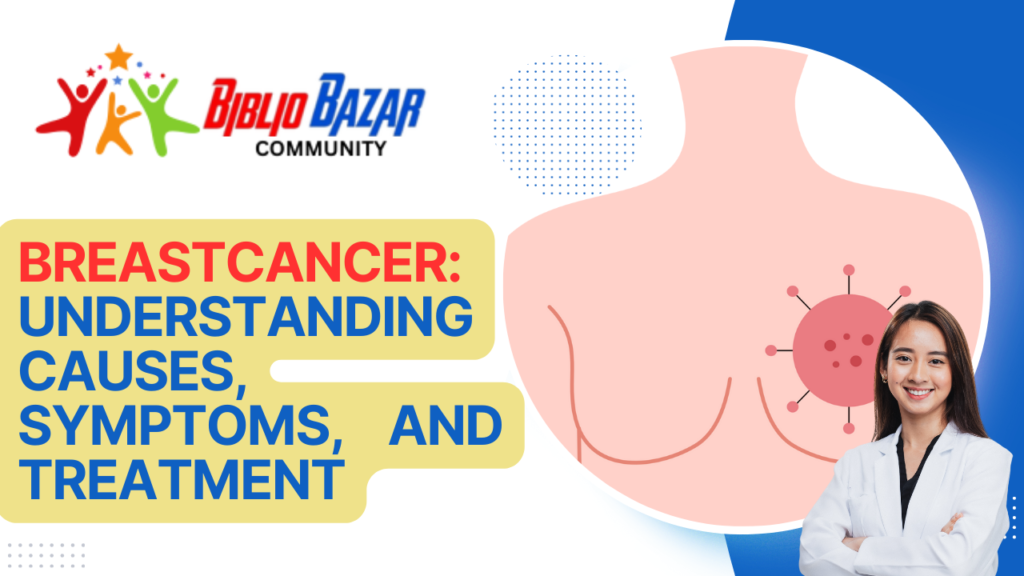
Breast cancer is a significant health concern globally, affecting millions of women and, to a lesser extent, men. This malignant tumor arises from the cells of the breast and can be categorized into several types based on its origin and behavior. The primary types include ductal carcinoma in situ (DCIS), which is non-invasive and confined to the ducts, and invasive ductal carcinoma (IDC), which is the most common type and can spread to surrounding breast tissue. Other types include invasive lobular carcinoma (ILC) and triple-negative breast cancer, which lacks three common receptors known to fuel most breast cancers.
The exact causes of breast cancer are not completely understood, but several factors are known to increase the risk. Genetic mutations, particularly in the BRCA1 and BRCA2 genes, significantly elevate the risk. Family history of breast or ovarian cancer, aging, and reproductive history, such as early menstruation or late menopause, also contribute to higher risk. Lifestyle factors, including alcohol consumption, obesity, and lack of physical activity, play a role, as do certain hormone replacement therapies. Environmental factors and exposure to radiation have also been linked to an increased risk of breast cancer.

Risk factors for breast cancer can be divided into those that are modifiable and those that are not. Non-modifiable risk factors include age, gender, family history, and genetic predisposition. Modifiable risk factors encompass lifestyle choices such as diet, exercise, alcohol consumption, and smoking. Hormonal factors, like the use of birth control pills or hormone replacement therapy, can also influence risk. Understanding these risk factors helps in identifying high-risk individuals and promoting early screening and preventive measures.
Symptoms of breast cancer vary widely, from the presence of a lump in the breast or underarm to changes in breast shape or size. Other symptoms include dimpling or puckering of the skin, nipple retraction, or discharge that may be bloody or clear. Pain in the breast or nipple can also be a sign, although breast cancer is often painless in the early stages. It’s important for individuals to perform regular self-examinations and seek medical advice if they notice any unusual changes.

Treatment options for breast cancer depend on the type and stage of the disease, as well as the patient’s overall health and preferences. Common treatments include surgery, radiation therapy, chemotherapy, hormone therapy, and targeted therapy. Surgery might involve lumpectomy, where only the tumor and a small margin of surrounding tissue are removed, or mastectomy, which involves the removal of the entire breast. Radiation therapy uses high-energy rays to kill cancer cells, while chemotherapy uses drugs to destroy cancer cells or stop their growth. Hormone therapy targets cancers that are hormone receptor-positive, and targeted therapy focuses on specific molecular targets associated with cancer.
Surgical management of breast cancer is a critical component of treatment, aiming to remove the tumor and reduce the risk of recurrence. Depending on the stage and type of cancer, surgery options range from breast-conserving surgery, like lumpectomy, to more extensive procedures like mastectomy. Sentinel lymph node biopsy or axillary lymph node dissection may be performed to assess the spread of cancer to lymph nodes. Reconstruction surgery is often considered to restore the breast’s appearance following mastectomy, which can be done immediately after the cancer surgery or at a later time.

A comprehensive nursing care plan for breast cancer patients involves providing physical, emotional, and psychological support throughout the diagnosis, treatment, and recovery phases. Preoperative care includes patient education about the surgical procedure, managing anxiety, and preparing the patient physically and emotionally for surgery. Postoperative care focuses on pain management, wound care, and monitoring for complications such as infection or lymphedema. Nurses also play a crucial role in educating patients about self-care, managing side effects of treatments like chemotherapy and radiation, and offering support for coping with body image changes and emotional stress. Ongoing support and follow-up care are essential to ensure the patient’s well-being and early detection of any recurrence.
In conclusion, breast cancer is a complex disease with multiple types, causes, and risk factors. Early detection through regular screening and awareness of symptoms is vital for successful treatment outcomes. A multidisciplinary approach, including various treatment options and surgical management, tailored to the individual patient’s needs, is crucial. Comprehensive nursing care throughout the patient’s journey is essential for physical and emotional recovery and improving the quality of life for those affected by breast cancer.
Frequently Asked Questions (FAQs):
- What are the main types of breast cancer?
The main types of breast cancer include ductal carcinoma in situ (DCIS), invasive ductal carcinoma (IDC), invasive lobular carcinoma (ILC), and triple-negative breast cancer. - What causes breast cancer?
The exact causes are not fully understood, but risk factors include genetic mutations (e.g., BRCA1 and BRCA2), family history, aging, reproductive history, lifestyle factors (e.g., alcohol consumption, obesity), and exposure to radiation. - Who is at risk for breast cancer?
Risk factors include being female, older age, family history of breast or ovarian cancer, genetic predispositions, lifestyle factors, and certain hormonal factors. - What are the symptoms of breast cancer?
Symptoms include lumps in the breast or underarm, changes in breast shape or size, skin dimpling, nipple retraction, nipple discharge, and sometimes breast or nipple pain. - How is breast cancer diagnosed?
Diagnosis typically involves mammograms, ultrasound, MRI, and biopsy to confirm the presence and type of breast cancer. - What treatment options are available for breast cancer?
Treatment options include surgery (lumpectomy or mastectomy), radiation therapy, chemotherapy, hormone therapy, and targeted therapy, depending on the type and stage of cancer. - What does surgical management of breast cancer involve?
Surgical options include breast-conserving surgery (lumpectomy), mastectomy, sentinel lymph node biopsy, and reconstructive surgery. - How can nursing care support breast cancer patients?
Nursing care includes preoperative and postoperative support, pain management, wound care, patient education, emotional support, and monitoring for complications. - Can breast cancer be prevented?
While not all cases can be prevented, reducing modifiable risk factors, such as maintaining a healthy lifestyle, limiting alcohol intake, and regular screenings, can help lower risk. - What should I do if I find a lump in my breast?
If you find a lump in your breast, it’s important to see a healthcare provider promptly for evaluation and possibly further testing to determine the cause.
Discover more from Bibliobazar Digi Books
Subscribe to get the latest posts sent to your email.


